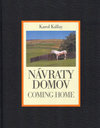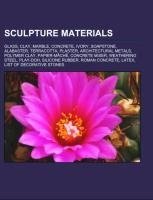
-
 Anglický jazyk
Anglický jazyk
Sculpture materials
Autor: Source: Wikipedia
Source: Wikipedia. Pages: 66. Chapters: Glass, Clay, Marble, Concrete, Ivory, Soapstone, Alabaster, Terracotta, Plaster, Architectural metals, Polymer clay, Papier-mâché, Concrete mixer, Weathering steel, Play-Doh, Silicone rubber, Roman concrete, Latex,... Viac o knihe
Na objednávku
18.45 €
bežná cena: 20.50 €
O knihe
Source: Wikipedia. Pages: 66. Chapters: Glass, Clay, Marble, Concrete, Ivory, Soapstone, Alabaster, Terracotta, Plaster, Architectural metals, Polymer clay, Papier-mâché, Concrete mixer, Weathering steel, Play-Doh, Silicone rubber, Roman concrete, Latex, List of decorative stones, Porphyry, Plasticine, Metal clay, Microcrystalline wax, Fimo, Plaster cast, Stone sculpture, Sugru, RTV silicone, Ferrocement, Modelling clay, Sculpey, Sylacauga marble, Wax carving, Hepatizon, List of types of limestone, Salt ceramic, Composition ornament, Tortoiseshell material, Faux Bois, Milliput, Parian marble, Kato polyclay, Cold porcelain, Salt dough, Plastilina, Pagodite, Modroc, Equilibrium gel. Excerpt: Concrete is a composite construction material, composed of cement (commonly Portland cement) and other cementitious materials such as fly ash and slag cement, aggregate (generally a coarse aggregate made of gravel or crushed rocks such as limestone, or granite, plus a fine aggregate such as sand), water and chemical admixtures. The word concrete comes from the Latin word "concretus" (meaning compact or condensed), the perfect passive participle of "concrescere", from "con-" (together) and "crescere" (to grow). Concrete solidifies and hardens after mixing with water and placement due to a chemical process known as hydration. The water reacts with the cement, which bonds the other components together, eventually creating a robust stone-like material. Concrete is used to make pavements, pipe, architectural structures, foundations, motorways/roads, bridges/overpasses, parking structures, brick/block walls and footings for gates, fences and poles. Concrete is used more than any other man-made material in the world. As of 2006, about 7.5 cubic kilometers of concrete are made each year-more than one cubic meter for every person on Earth. Concrete powers a industry, employing more than two million workers in the United States alone. More than 55,000 miles (89,000 km) of highways in the United States are paved with this material. Reinforced concrete, prestressed concrete and precast concrete are the most widely used types of concrete functional extensions in modern days. Concrete has been used for construction in various ancient structures. During the Roman Empire, Roman concrete (or opus caementicium) was made from quicklime, pozzolana and an aggregate of pumice. Its widespread use in many Roman structures, a key event in the history of architecture termed the Roman Architectural Revolution, freed Roman construction from the restrictions of stone and brick material and allowed for revolutionary new designs in terms of both structural complexity and dimension. Hadrian's Pant
- Vydavateľstvo: Books LLC, Reference Series
- Rok vydania: 2012
- Formát: Paperback
- Rozmer: 246 x 189 mm
- Jazyk: Anglický jazyk
- ISBN: 9781157463399

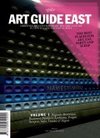





 Ruský jazyk
Ruský jazyk 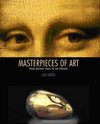


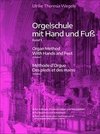
 Nemecký jazyk
Nemecký jazyk 
